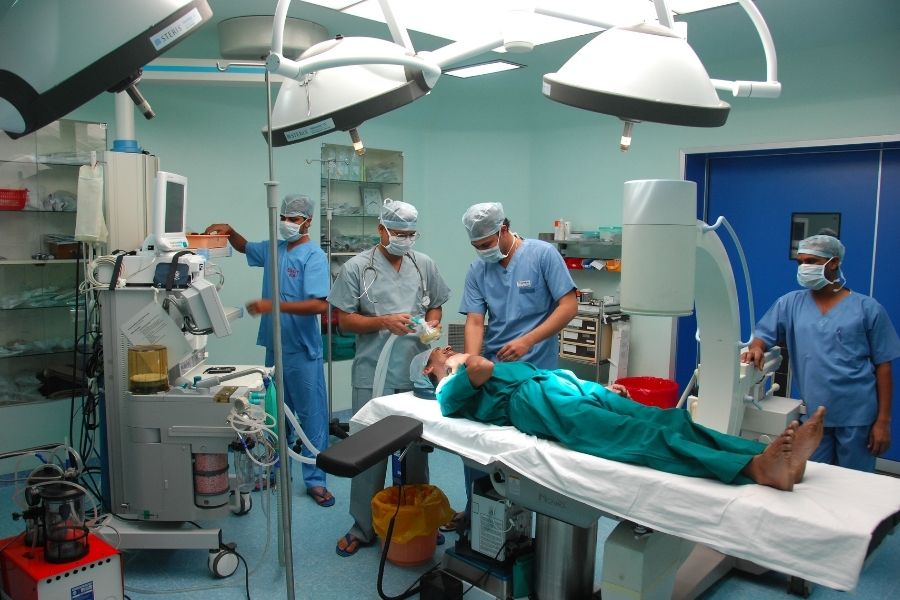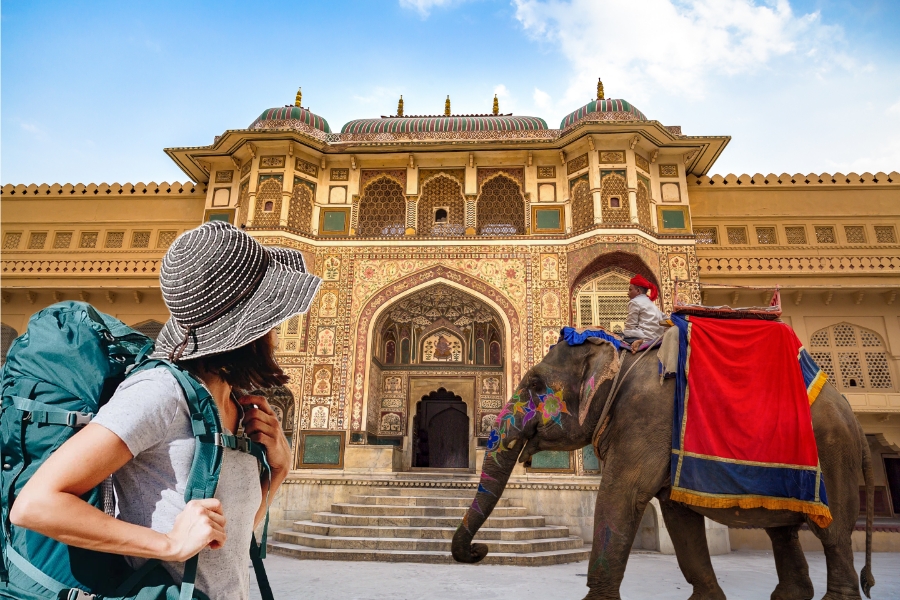Seize the Opportunity in Medical Tourism post Covid19
The huge backlog of elective surgeries in markets across the globe presents the Indian medical tourism sector with an unprecedented opportunity. India should ramp up on hospitals with JCI accreditation, and also explore innovative ideas like cruise ships docked at these countries for performing high volume elective surgeries.

We are living in VUCA (Volatile, Uncertain, Complex and Ambiguous) times brought about by COVID-19 and since we have not faced such a situation in the living memory, it requires innovative and bold solutions to cope with its after effects. It has also opened a window of opportunity for India.
The backlog of elective surgeries (surgeries that are scheduled in advance because they do not involve a medical emergency) in the developed world due to COVID-19 such as cataract, hip & knee replacement have presented India an unprecedented opportunity to take the global lead in medical tourism. The government and other stakeholders should devise a strategy to open up the medical tourism market in the developed world.
As COVID-19 engulfs the world and keeps on spiking on a routine basis, almost the entire healthcare resources, such as 90% of the ICU beds in European countries are earmarked for COVID-related incidents. This has pushed elective surgeries to the backburner.
According to a recent survey in the US by McKinsey & Co., healthcare leaders said they may struggle to address this backlog given workforce availability, enhanced sanitation protocols, and reserved inpatient capacity. Without healthcare systems recalibrating demand and capacity, patients could face long backlogs for procedures, and potentially experience higher morbidity and mortality rates.
Europe is faring no better. Even before the COVID‑19 pandemic, waiting times for elective surgery were on the rise in many countries as the demand for surgery was increasing more rapidly than the supply as reported in Health at a Glance: Europe 2020, published by the European Commission.
The three high volume surgical procedures reported in above report are cataract surgery, hip replacement and knee replacement. The median waiting times for people who received a cataract surgery in 2019 (pre-COVID-19) varied from about 30 days in Italy, Hungary and Denmark, to about 150 days in Estonia and 250 days in Poland. The proportion of patients remaining on the waiting list for a period of more than three months during that same year varied from 7% in Hungary to over 85% in Estonia, Poland and Slovenia. For hip and knee replacement, the data is similar in nature.
These are also the top surgeries performed on medical tourists in India. In fact, Indian hospitals have developed excellent expertise and extremely high success rates, even higher than the developed world. Indian ophthalmic surgeons are more experienced in cataract surgery than their European counterparts due to the sheer number of procedures performed by each surgeon. The country’s eye hospitals such Arvind, Prasad and Sankara Netralaya are world famous.
Take the case of UK. COVID-19 continues to have a severe effect on planned surgery in the UK, and dealing with the resulting backlog is a critical concern for the National Health Service (NHS) and the number of patients awaiting treatment hit a record high of 4.46 million in November 2020. The number who have already waited more than a year for treatment has shown a 153-fold increase from a year back in November 2019, and growth shows no sign of slowing. The story is similar in Italy, Spain and other countries in Europe. The wait for certain cases may extend 2-3 years too.
The same McKinsey study quoted a May 2020 study of orthopaedic surgery volumes by the Journal of Bone and Joint Surgery. It suggested that the US may face a waiting list of more than a million total joint and spine surgery cases by mid-2022, and that the country may need up to 16 months to work through the backlog of orthopaedic care. In addition, an analysis of cataract surgery volumes by the Journal of Cataract & Refractive Surgery estimated the United States may face a backlog of 1.1 million to 1.6 million cataract procedures by 2022.
The healthcare sector is expanding rapidly in India. This sector is predominantly privatized with almost 75-80% of hospitals being managed by the private sector. This sector is expected to grow at a CAGR of 15% and reach around US$ 280 billion by 2020.
Within healthcare, the medical tourism sector shows immense potential. Between 2012-2018, the sector grew at a CAGR of 20%. It is estimated that India will account for 6% of the global MVT market share by 2023. The global MVT market was valued at US$ 61 billion in 2016, and is expected to grow at a CAGR of 15% to reach US$ 163 billion in 2023.
A majority of patients come from neighbouring countries such as Afghanistan, Bangladesh, Myanmar, Gulf countries and African countries like Nigeria. COVID presents a golden opportunity to sell the Indian medical tourism sector to the developed world to lessen their backlog. This will also be a revenue boost for private hospitals, which have seen a massive drop due to lockouts.
Using American healthcare costs as a benchmark, Patients Without Borders estimates savings ranging from 40% to 90%, depending on the country. In Taiwan, Thailand, Mexico and Turkey, patients can save 40-65% on procedures and treatments. At the higher end are countries like Singapore and South Korea, where patients can save 25-45% on procedures. In India, the savings can start from 65% and go up to 90% with patients receiving quality care.
The Indian government, with the cooperation of participating hospitals should sell a strategy to foreign governments, starting with UK’s NHS to ferry patients to India on chartered flights at a mutually acceptable cost.
As of today, 38 hospitals in India have JCI accreditation, which is the gold standard for the medical tourism sector. These can be the nucleus for the outsourcing of elective surgery cases. In addition, there are 734 hospitals accredited by India’s National (NABH). The government can assist some of these, which are promising for Medical Tourism to go for JCI or inspection by NHS for specified treatments.
Another bold idea is to buy small size cruise ships and station them at cruise terminals in UK and other countries. The cruise industry was devastated by COVID and many companies are selling their serviceable assets. Some are even reaching Indian shores for dismantling. Since these ships will be docked at a fixed place, their running costs including marine insurance will be lower. A quick Google search has revealed that a 50-bed cruise or ferry ship can be purchased for about Rs. 30 crores. These ships are already equipped with comfortable cabins, laundry, kitchen, fresh water RO and crew facilities and can be converted for high volume elective surgeries like cataract at a low cost. Staff can be rotated from India at regular intervals.
In the long run, as foreign governments gain more confidence with the success rate of Indian healthcare, this can be a regular source of medical tourism income and can spur growth in several related sectors.
The government has promoted India as a preferred medical tourism destination by issuing fast-track medical visas and rapid airport clearances for those visiting as medical tourists. Now it is time to take advantage of pressure on healthcare industry in developed world and seize this moment of opportunity.
The author is Research Advisor, GoG-AMA Centre for International Trade and Consultant, Centre for VUCA Studies, Amity University. He is also author of The VUCA Company and The VUCA Learner. Views are personal.













Leave a comment